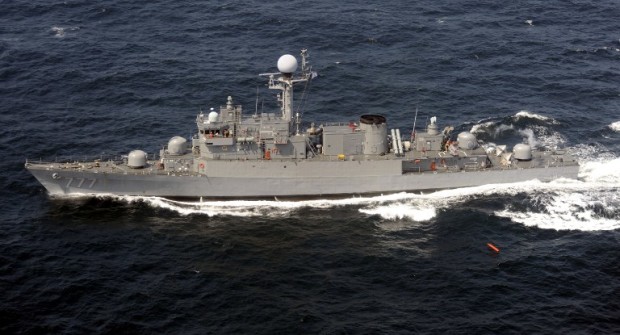South Korea, Japan, US hold drill against North Korean subs

Crew members of a South Korean destroyer fire an anti-submarine torpedo during military drills in the Yellow Sea in South Korea on August 5, 2010. South Korea, Japan and the US conducted joint drills aimed at countering threats from North Korean submarines. AFP
SEOUL, South Korea — South Korea, Japan and the US held a joint naval exercise Monday aimed at countering missile threats from North Korean submarines, Seoul’s defense ministry said, amid mounting concerns over the hermit state’s weapons program.
Pyongyang is on a quest to develop a long-range missile capable of hitting the US mainland with a nuclear warhead, and has so far staged five nuclear tests, two of them last year.
The three-day drills involving more than 800 troops kicked off after US President Donald Trump warned Sunday that the United States is prepared to act unilaterally to deal with North Korea’s nuclear program if China proves unwilling to help.
The exercise began off South Korea’s southern coast near Japan, featuring multiple naval destroyers and helicopters used in anti-submarine warfare, the ministry said.
It was aimed at “ensuring effective response to the North’s submarine threats including the submarine-launched ballistic missiles (SLBM),” and “demonstrates the three countries’ strong determination”, according to the ministry.
Article continues after this advertisementTensions have escalated in the region following a series of missile launches by North Korea in recent months and reports suggesting Pyongyang may be preparing another atomic test.
Article continues after this advertisementIn February the North simultaneously fired four ballistic missiles off its east coast, three of which fell provocatively close to Japan, in what it said was a drill for an attack on US bases in the neighboring Asian country.
Last August Pyongyang also successfully test-fired a SLBM 500 kilometers towards Japan, far exceeding any previous sub-launched tests, in what the North’s leader Kim Jong-Un hailed as the “greatest success.”
A nuclear-capable SLBM system would take the North’s threat to a new level, allowing deployment far beyond the Korean peninsula and a “second-strike” capability in the event of an attack on its army bases.
Analysts say that while Pyongyang has made faster progress in its SLBM system than originally expected, it is still years away from deployment.
The isolated North is barred under UN resolutions from any use of ballistic missile technology. CBB/rga